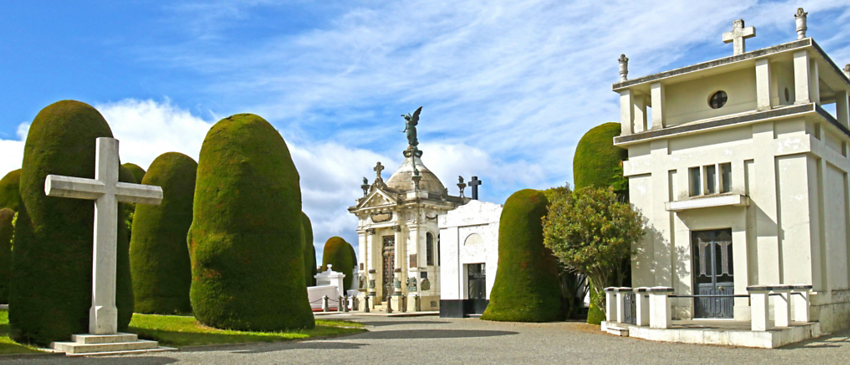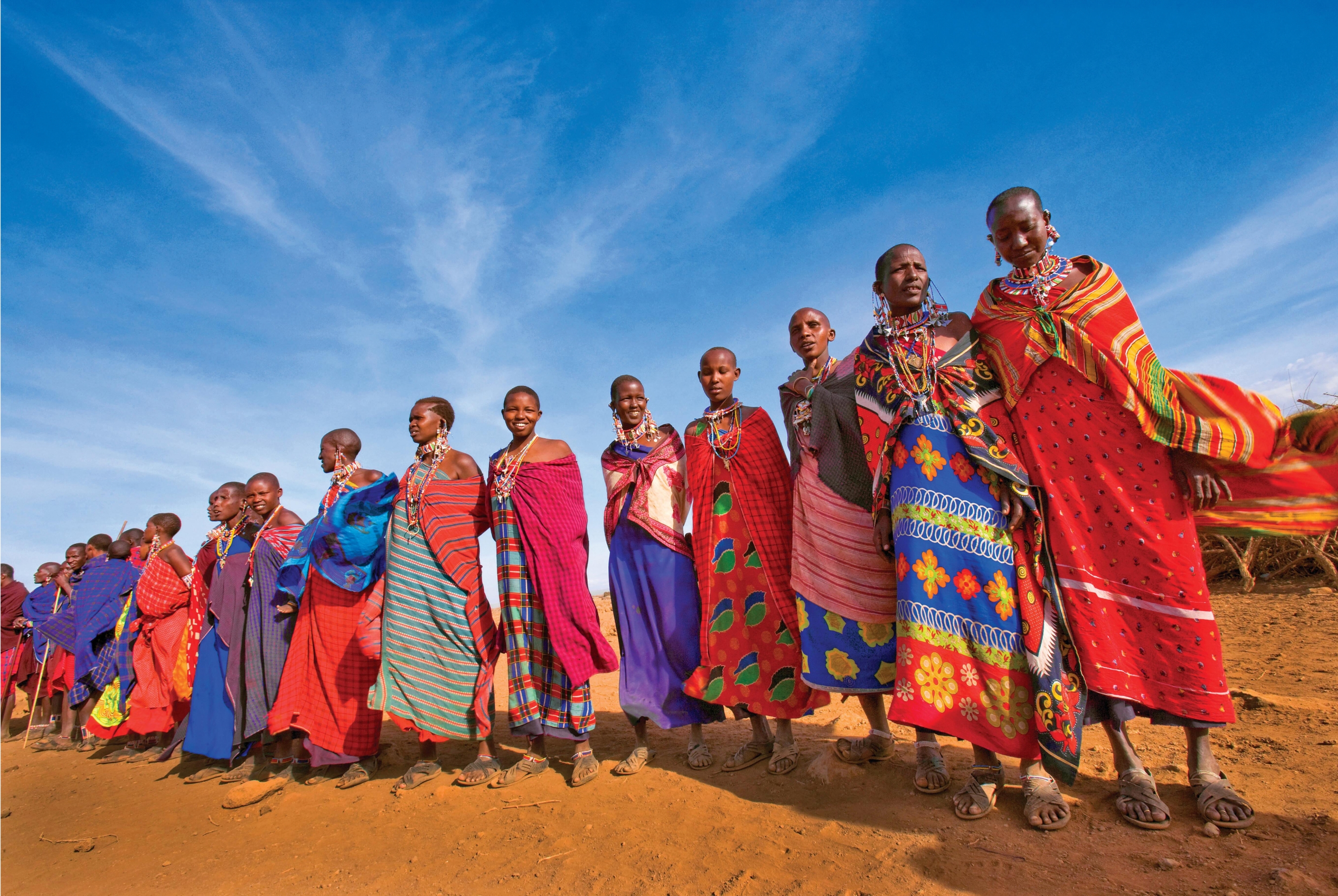Where in the World?
Posted on 5/14/2024 12:00:00 AM in Travel Trivia

Some of the most influential families of Punta Arenas lie buried in the cemetery’s grand mausoleums—but most visitors come to pay respects to a very different figure.
Question: Where in the world do people pray to a man they can’t name behind a gate they can’t open?
Answer: Punta Arenas Cemetery, Chile
The sprawling Punta Arenas Cemetery in Chile first opened in 1894 and it distinguished itself with grandeur: sculpted European cypress trees outlined paths to elegant marble mausoleums of the city’s founders. Fifteen years later, heiress and entrepreneur Sara Braun erected a giant stone portico to make the entrance even more impressive. But the main attraction today is one of the cemetery’s poorest dwellers and the big gate is forever closed.
The portico entrance was doomed to be shuttered even before it was finished. Braun had agreed to fund the structure on one condition: that it be permanently shut after her death. Perhaps deciding that the mere presence of such an imposing structure would enhance the cemetery’s prestige, authorities agreed. Twenty-five years later, when Braun died, the portico was sealed off, and visitors have been required to use side entrances ever since.
While many guests from other parts of the world are content to witness the opulent European-style tombs and the humbler headstones of middle-class plots, local people tend to make a beeline for the grave of the Indio Desconocido (the Unknown Indian). There, simple whitewashed stone walls surround the figure of an indigenous Selk’nam man. The Selk’nam population was nearly gone as the 20th century got underway, and when the last Selk’nam man on nearby Diego de Almagro Island died in 1930, the city-dwelling descendants of the tribe paid to bring his body to the cemetery.
A surprising thing happened: visitors began leaving candles and coins at the sight as an offering to the nameless Indian’s memory. Over time, flowers and notes and photos of visitors’ dead loved ones appeared. The Indo Desconocido had become the star attraction of the entire necropolis. The money that accumulated ended up funding the local Red Cross, further cementing the notion that the presence of the Indian was good for the local people. Now, his statue is surrounded by tin plaques describing answered prayers. It’s a telling contrast to the legacy of Sara Braun. One of them made a shrine to herself and forced people to do her bidding; the other never asked for attention yet still inspires hope and goodwill.
Chilean Funeral Practices & Beliefs Across Time
- The oldest Chilean burials are evidenced by urns from the Pitrén people (around 400 AD), who buried their dead inside large ceramic vessels glazed black or carved with plant motifs and geometric figures.
- The Mapuche that followed the Pitrén were more likely to house their dead prone, laid out in canoes, hollowed tree trunks, or long stone boxes.
- Today, 92% of Chileans identify as Christian, the bulk of them Catholic, and fewer than 5% ascribe to indigenous beliefs.
- The vast majority of Chileans (more than 80%) say they believe that heaven exists, while only half believe in hell.
- The majority of Chileans follow Catholic funeral rites: a wake, a church funeral, and then a procession to the cemetery behind a hearse.
- Specific funeral versions of the cueca, a dance with courtly moves accompanied by singers and musicians, are performed after many funeral services, the lyrics and music varying by region.
- On the first anniversary of a loved one’s death, Chileans have a special mass to honor the memory of the lost.
- All Saints Day (similar to Day of the Dead) is celebrated on November 1, with Chileans bringing flowers and candles to the graves of loved ones.
- Chileans of indigenous Atacameño descent still observe old funeral traditions: they sing and pray overnight after the death, dress the body in new clothes with a funeral sash, “cleanse” the living family with the help of a yatiri (healer), and wait a full year for the farewell ceremony.
Learn more about the rich traditions of two countries on O.A.T.’s The Wilderness Beyond: Patagonia, Tierra del Fuego & the Chilean Fjords adventure.











